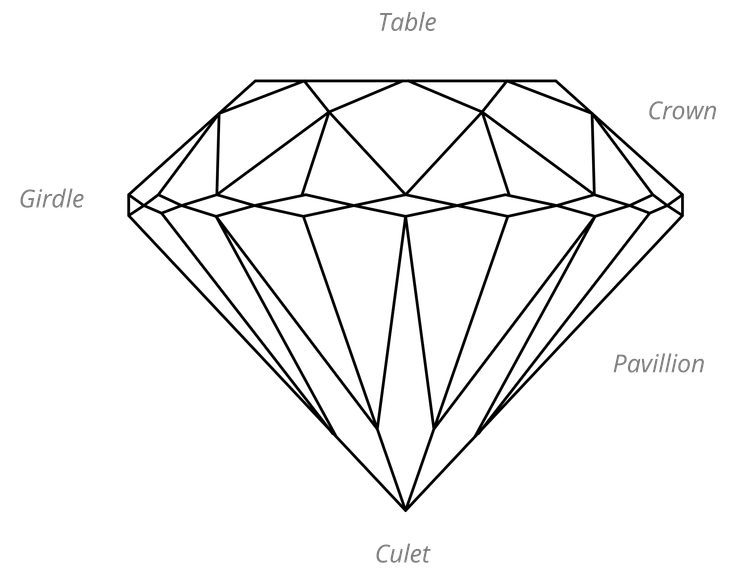Diamond Anatomy
Every diamond in the world is unique, and as the hardest gemstone on the Mohs scale of mineral hardness, scoring a 10, a diamond’s durability is unsurpassed.
The characteristics that identify them are known as the 4 Cs – cut, colour, clarity and carat. The 4 Cs is a universally recognised method of diamond grading, created by the Gemological Institute of America (GIA), to standardise the classification of diamond quality.
Below is the anatomy of a diamond to help you understand the terminology that describes a diamond’s features.
